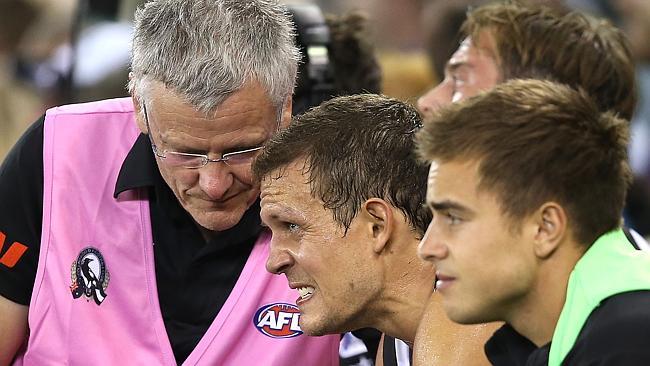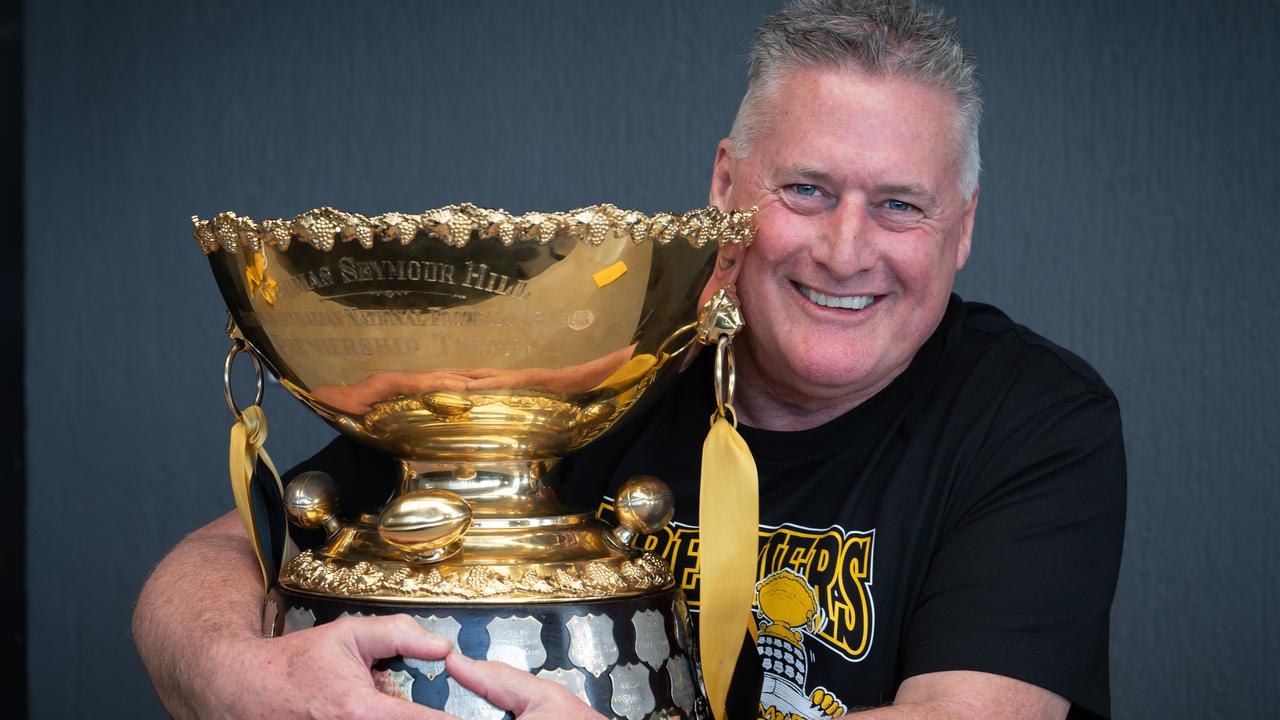Insider: How clubs deal with the 120-cap on interchanges
KEEP some up your sleeve. That’s the message from Power and the Crows as they come to grips with the new cap on interchange rotations.

Andrew Capel
Don't miss out on the headlines from Andrew Capel. Followed categories will be added to My News.
KEEP some up your sleeve.
That is the message from Port Adelaide and Adelaide as they come to grips with the new cap on interchange rotations.
While the Power has had little trouble adapting to the league’s 120-cap limit in the first season since unlimited interchanges were scrapped, the Crows have pushed their rotations to the limit.
Just like last year, Adelaide, Fremantle and GWS are the most prolific users of the bench.
The new cap has meant interchanges across the league are down by an average of 20.
The Crows have dropped from 142.5 last year to 123.5 this season while Port’s average rotations have dipped from 132.5 to 107.5.
Those numbers include changes made at breaks and for injuries, which don’t count against the cap.
For those interchanges under the cap, Adelaide is right on the edge, averaging 117 a game — 1.5 fewer than the league-leading Dockers.
The Crows have recorded the equal-most interchanges in a game this season, making 119 against the Power in their 55-point Showdown XXXVI loss.
They made 115 changes against Geelong in round one as coach Brenton Sanderson continues his desire to move names on the whiteboard.
While Sanderson has been challenged by the interchange cap, Port has had no such problems.
Coach Ken Hinkley is averaging just 97.5 moves — keeping 22.5 up his sleeves.
This is despite midfield hardbut Ollie Wines being the second-most benched player in the competition, at 20.
Richmond’s Reece Conca has been interchanged 21 times while Patrick Dangerfield is the leading Crow to be given a spell, resting 17 times.
Champion Data statistics reveal most clubs have managed their cap rotations by restricting them in the first three quarters before loosening their grip in the last term.
Average interchanges under the cap have been 26.1 (Q1), 25.9 (Q2), 25.1 (Q3) and 27.3 (Q4).
Adelaide is using a league-high 32.5 rotations in the final quarter while Port is averaging 26 when its players are tiring.
“I think most clubs have learnt to cope pretty quickly with the new cap,’’ Power football operations manager Peter Rohde said.
“The key seems to be to keep a bit up your sleeve for the last term just in case tiredness creeps in and you need to rotate more
“Clubs are aware that if you burn your interchanges early in a game you could find yourself in trouble so they are holding them back just to make sure they aren’t left short at the end.’’
Rohde said Port had reduced its rotations by leaving its key position players on the ground for longer and resting its midfielders forward or back.
One of the glaring statistics after round two is struggling Melbourne’s refusal to use the bench.
It has averaged just 81 moves under the cap — nine fewer than the next-ranked team Gold Coast.


